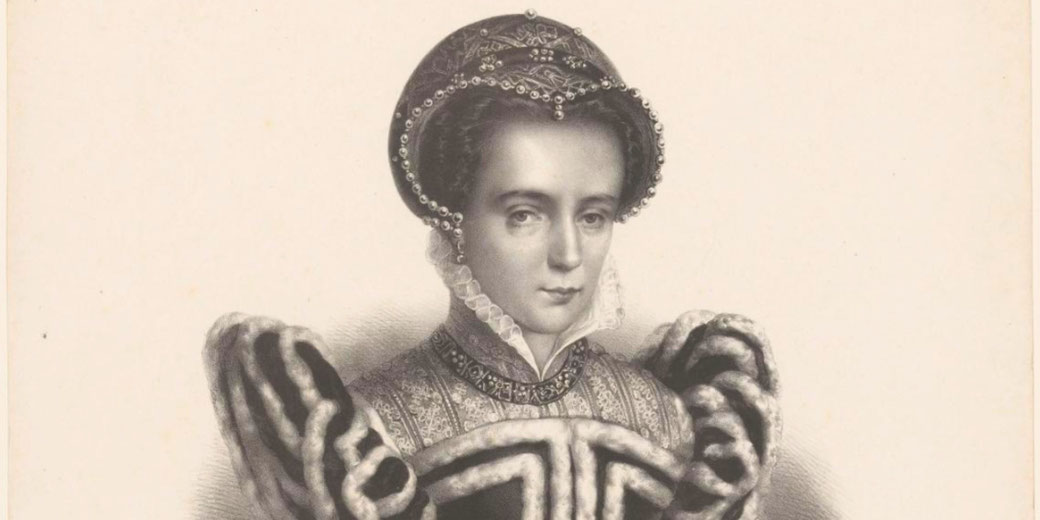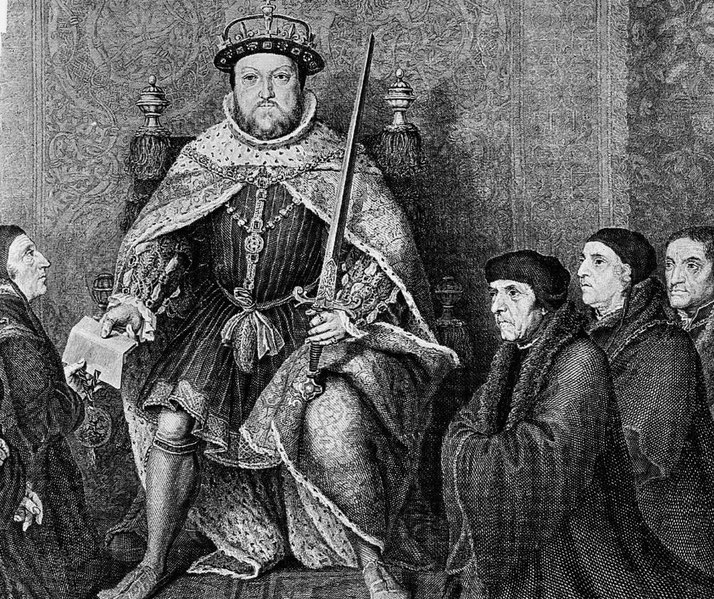Mary I: England’s most misunderstood queen?

Queen Mary I of England, often referred to as "Bloody Mary", remains a subject of intense debate and scrutiny. Born to King Henry VIII and his first wife, Catherine of Aragon, Mary's life was full of dramatic political and religious turmoil.
Her reign, lasting from 1553 to 1558, was marked by her attempts to restore Roman Catholicism in England, leading to the persecution of Protestants and earning her the infamous nickname.
Mary's tumultuous early life
Mary was born on February 18, 1516, at Greenwich Palace, London, to King Henry VIII and his first wife, Catherine of Aragon.
She was their only surviving child, and her birth was initially seen as a disappointment because she was not a male heir.
Mary's life took a dramatic turn when her father, Henry VIII, sought to annul his marriage to Catherine of Aragon.
Henry was desperate for a male heir, and Catherine had not provided one. The annulment was a significant event not just for the royal family but also for the entire country, as it led to England's break with the Roman Catholic Church.
In 1533, Henry annulled his marriage to Catherine, Mary was declared illegitimate, and her mother was banished from court.
After the annulment, Mary's relationship with her father became strained. She was separated from her mother and was not allowed to visit her.
Henry VIII married Anne Boleyn, who gave birth to Elizabeth, Mary's half-sister. Mary was forced to serve as a lady-in-waiting to her infant half-sister, a humiliating experience for her.
Mary's half-brother Edward VI ascended to the throne after Henry VIII's death in 1547. Edward was a staunch Protestant, and his reign saw the further marginalization of Mary due to her Catholic faith.
She was pressured to abandon Catholicism, which she steadfastly refused to do.

Mary's ascension to the throne
Then, Edward himself died in 1553 at the age of 15, sparking a succession crisis that would have far-reaching implications for England.
Before his death, Edward VI had sought to prevent the Catholic Mary from ascending to the throne.
He drafted a "Devise for the Succession", which bypassed both Mary and her half-sister Elizabeth, in favor of Lady Jane Grey, a Protestant and Edward's cousin once removed.
As a result, Lady Jane Grey was proclaimed queen on July 10, 1553.
Mary, aware of the attempt to deny her the throne, rallied support from the local nobility and commoners alike.
Mary and her supporters marched on London, gathering more and more support along the way.
The Privy Council, recognizing the tide of public opinion and the likelihood of military defeat, proclaimed Mary queen on July 19, 1553, effectively ending Jane Grey's short reign.
Lady Jane Grey was then imprisoned in the Tower of London. Mary was crowned Queen of England on October 1, 1553, at Westminster Abbey.
The ceremony was a lavish affair, and Mary took the opportunity to reaffirm her commitment to Catholicism, signaling the religious changes that would come.
Why her marriage announcement sparked a rebellion
Mary I then announced that she had decided to marry Philip II of Spain. Philip, the son of Emperor Charles V, was a powerful figure in his own right and was set to inherit the Spanish Empire.
However, the announcement was met with widespread disapproval among the English populace and nobility.
They were deeply concerned about becoming subordinate to Spain, a powerful Catholic empire.
Additionally, the union was seen as a way to solidify Catholic influence in England, which was a point of contention among the Protestant faction.
The discontent over Mary's marriage plans culminated in Wyatt's Rebellion, led by Sir Thomas Wyatt.
This was a Protestant-led uprising with the primary objectives of overthrowing Mary and preventing her marriage to Philip II.
Wyatt and his supporters also aimed to replace Mary with her Protestant half-sister, Elizabeth.
The rebellion began in January 1554, gaining some initial momentum as Wyatt led a force from Kent with the intention of marching on London.
Mary acted swiftly to quell the uprising. She made a public speech at the Guildhall in London, rallying her subjects and reaffirming her right to choose a husband.
Her impassioned speech was effective in galvanizing public support for her rule.
Wyatt struggled to gain the widespread support he had hoped for, particularly among the nobility.
The government's quick actions, including the arrest of key figures and the fortification of London, led to the rebellion's failure.
Wyatt was captured and later executed.
The marriage between Mary and Philip II eventually took place on July 25, 1554, but the public sentiment was far from celebratory.
Her harsh religious policies and the Marian Persecutions
Mary I's reign was marked by a fervent desire to restore Roman Catholicism in England, a faith she had devoutly followed throughout her life.
One of her first acts was the repeal of the religious laws enacted under Henry VIII and Edward VI, effectively undoing years of Protestant reforms.
She also reinstated the Heresy Acts, which made it a capital offense to deny the teachings of the Catholic Church.
Mary sought the support of the Pope and other Catholic monarchs in Europe, most notably through her marriage to Philip II of Spain.
The most infamous aspect of Mary's religious policies was the series of persecutions against Protestants, commonly referred to as the Marian Persecutions.
These began in earnest in 1555 and lasted until the end of her reign in 1558.
Under the guidance of key advisors like Stephen Gardiner, the Bishop of Winchester, and with the papal backing of Pope Paul IV, Mary initiated a brutal crackdown on Protestantism.
Prominent Protestant figures, including bishops, scholars, and clergy, were arrested, tried, and often executed, usually by burning at the stake.
Thomas Cranmer, the Archbishop of Canterbury who had annulled Mary's parents' marriage and was a key figure in the English Reformation, was among those executed.
In total, it is estimated that around 300 people were executed for heresy during Mary's reign, earning her the nickname "Bloody Mary".
The dramatic loss of Calais and Mary's death
The loss of Calais in 1558 was a devastating blow to England and to Mary I's reign. Calais had been under English control since 1347 and was considered a jewel in the English crown, both for its strategic importance and as a symbol of English power on the European continent.
The loss occurred during the last year of Mary's reign, when French forces led by the Duke of Guise successfully besieged the city.
Despite a valiant defense, the English were forced to surrender on January 7, 1558.
Mary's health had been deteriorating for some time. She had also suffered from a series of phantom pregnancies, which not only affected her physically but also had a significant emotional impact.
The loss of Calais weighed heavily on her, and it is said that she remarked that when she died, "Calais" would be found engraved on her heart.
Mary I died on November 17, 1558, likely from ovarian or uterine cancer, although the exact cause is not definitively known.
She was succeeded by her half-sister, Elizabeth I, who would go on to rule for 45 years and establish a Protestant England.
How should Mary I be remembered?
Queen Mary I remains a polarizing figure in English history. Her attempts to restore Catholicism led to a period of intense religious persecution, earning her a place in history with her infamous nickname.
However, Mary should also be acknowledged as the first Queen Regnant; the first queen in England to rule on her own rather than as a consort. She had significant public support in her early reign and was also able to quash rebellions against her, indicating her political prowess.
As such, Mary I is a complex character, shaped by her times and her unyielding faith, leaving a legacy that continues to be studied and debated.
What do you need help with?
Download ready-to-use digital learning resources
Copyright © History Skills 2014-2025.
Contact via email
With the exception of links to external sites, some historical sources and extracts from specific publications, all content on this website is copyrighted by History Skills. This content may not be copied, republished or redistributed without written permission from the website creator. Please use the Contact page to obtain relevant permission.





